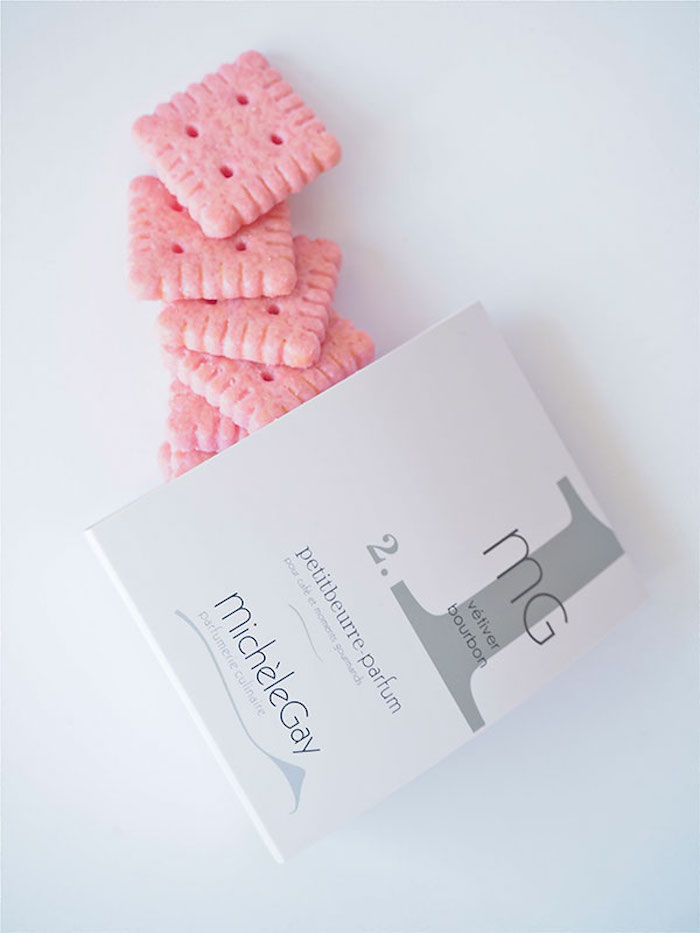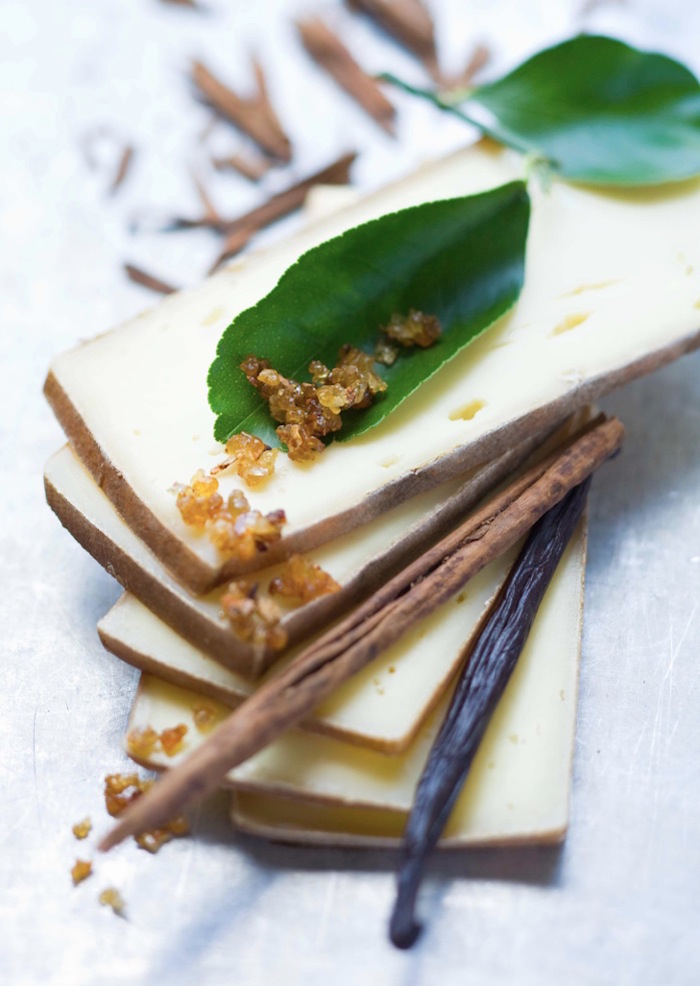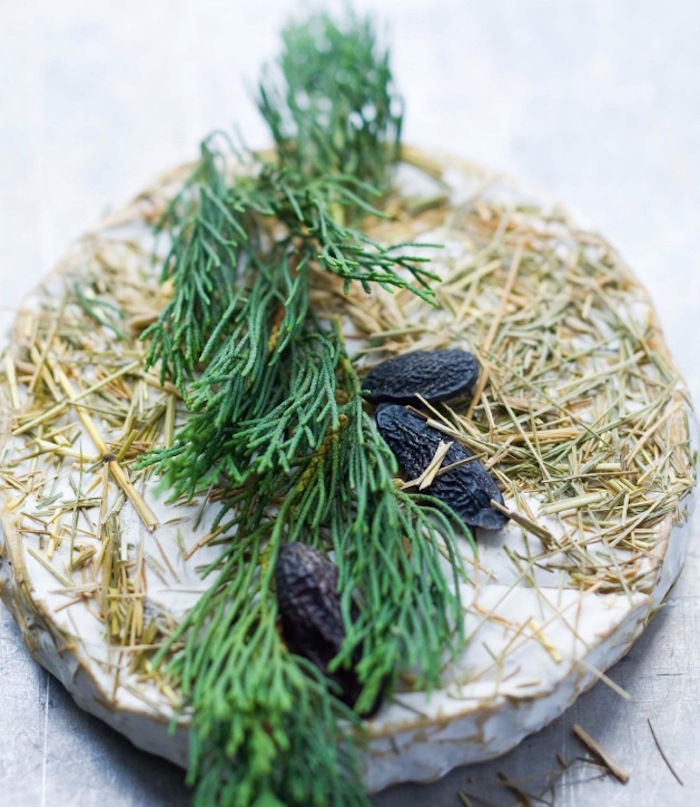The first in a series of food-related posts, published in anticipation of Design Observer's upcoming conference exploring the intersection of design and food. Tickets can be purchased here — early bird ticketing ends tomorrow, don't wait!
++++
Part stylist, part perfumer, Michèle Gay is a petite French woman who spices food with perfumes. She wants you to embrace tastes and scents as one in the same. To that end she mixes, savors, and smells in teas, cheeses, butters, seasonings, vinegars, oils, and gourmet dishes. Her signature confection is a delicate pink biscuit loaded with Vetiver-flavored aroma molecules—the same heady notes found in a bottle of Chanel No. 5.

++++
Part stylist, part perfumer, Michèle Gay is a petite French woman who spices food with perfumes. She wants you to embrace tastes and scents as one in the same. To that end she mixes, savors, and smells in teas, cheeses, butters, seasonings, vinegars, oils, and gourmet dishes. Her signature confection is a delicate pink biscuit loaded with Vetiver-flavored aroma molecules—the same heady notes found in a bottle of Chanel No. 5.

Coco in the kitchen? She cultivates a resemblance to Mademoiselle Chanel: the little black dress, the rows of pearls, the sassy hat. But a touch of humor is her secret ingredient.
Meanwhile, biting into one of her pink cookies turns out to be a mouth-watering thrill. Nothing prepares you for the surprising effect her complex olfactory notes have on your taste buds. You can’t help but take a deep breath. So deep, in fact, that every alveolus in your lungs feels alive. It is the opposite of an out-of-body experience. You’ve just come home to the world of your senses.

Yet, associating cosmetics scents with lips smacking smells can be unnerving. Michèle Gay’s Chanel No. 5 cookies are delicious, yet few of us would want to push the experiment further by taking a sip of the fragrance itself—even though drinking perfume, a serious transgression by today’s standards, was taken for granted in the not so distant past. Before Prohibition, perfumes—made with highly purified, “rectified” spirit—were stored in crystal decanters, to be either splashed or sipped, depending on the mood and the occasion.
That was then. Perfumes and cologne waters now contain poisonous substances that have been added to the alcohol to discourage even the thirstiest guzzlers. No longer considered intoxicants by the Alcohol and Tobacco Tax Trade Bureau, they are exempt from the heavy taxation levied on alcoholic beverages.
Victims of a fiscal compromise, flavors and fragrances went their separate ways. The chances of someone being tempted to dip a finger into a sweet-smelling pot of velvety Estée Lauder Re-Nutriv cream and licking it clean are nil. You might apply a generous layer of the discreetly perfumed Diorific lipstick on your lips, but you’ll never let your tongue touch the waxy surface of the stick.

However, thanks to a handful of avant-garde culinary perfumers, our nostrils and taste buds are prepped for a reconciliation. Emulating Michèle Gay, a number of enterprising perfumers, chefs, artists, and bartenders are creating “edible fragrance” collections. Alice and the Magician is a Vermont-based catering business that proposes spray aromas to turn classic cocktails into sensory journeys. Italian mixologist Tiziano Tasso teamed up with Givenchy to invent drinks based on the fragrances of the famed French couture house. Bartender Arnd Heissen, inspired by the scents of the German perfumer Frau Tonis Parfum, has created a line of fragranced cocktails available at the bar of the Ritz Carlton Berlin.
Unfortunately, this new field of investigation is mired in marketing jargon. In promotional literature, trite expressions like “heavenly scents,” “playful aromatics,” or “foodie fragrances” reveal an absence of proper terminology. Understandably so: our olfactory system bypasses our prefrontal cortex to connect directly with our limbic system—the brain that controls memories and emotions. Developing a new language might involve a different kind of imagery, one inspired by visual metaphors that speak to the senses. Music. Gestures. Colors. Rhythm. Motion.
The particular way we close our eyes when we smell a rose.
The slowing down of our pulse when our lips touch a puff of Chantilly cream.
The lull that precedes the first sip of a great wine.

